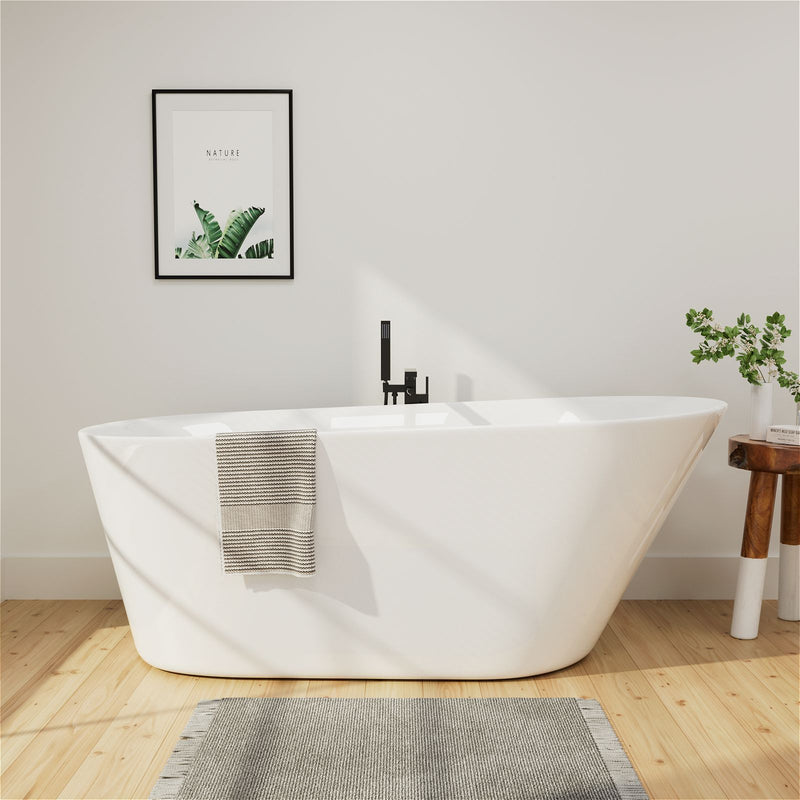A leaking bathtub drain is more than just a nuisance; it's a threat to the structure of your home. That persistent drip, drip, drip under the tub can lead to rotten subfloors, damaged ceilings, and mold growth, turning a simple repair into a costly nightmare. Often, the problem stems from a worn-out or damaged bathtub drain assembly. The good news is that replacing a bathtub drain is a manageable do-it-yourself project that can save you hundreds of dollars in plumber fees. It requires patience, the right tools, and a methodical approach, but it is well within the capabilities of a determined homeowner. This comprehensive guide will walk you through the entire process of diagnosing the leak and replacing the entire bathtub drain assembly. We will cover the different types of drains, the essential tools you'll need for each type, and the detailed, step-by-step procedures to remove the old hardware and install the new one, ensuring a perfect, watertight seal that will protect your home for years to come.

Diagnosis and Preparation
Before you start taking things apart, you need to confirm the source of the leak and gather the correct tools and materials for the job.
Identifying the Source of the Leak
The first step is to ensure the leak is actually coming from the drain and not from the tub's overflow plate or the pipes themselves. Thoroughly dry the area around the drain and under the tub if accessible, such as from a crawl space or basement. Place a few sheets of dry paper towel around the drain pipe connections. Then, plug the drain and fill the tub with a few inches of water. Mark the water level and let it sit for an hour. If the water level drops and the paper towel around the drain pipe is wet, you have confirmed a drain leak. To check the overflow, fill the tub above the level of the overflow hole. If water appears there, the leak is in the overflow assembly. This guide focuses on the drain itself.
Gathering the Necessary Tools and Materials
There are two main types of bathtub drains: traditional style with a visible crossbar for a plunger and a newer, lift-and-turn style. However, the critical distinction is the removal method. You will need a specific tool to unscrew the old drain. For a standard drain with two crossbars inside, a drain key or a large pair of heavy-duty pliers is used. For a drain with a single post in the center, a tub drain extraction tool is required. The universal tool for most drains is a drain wrench, an adjustable tool that fits inside the drain and grips it for turning. Other essential tools include channel-lock pliers, a hacksaw or reciprocating saw with a metal blade, screwdrivers, Teflon tape, and plumber's putty or silicone caulk. Purchase a complete, new bathtub drain kit that matches the style of your existing one. These kits typically include the drain body, the stopper mechanism, and a rubber gasket.
Removing the Old Drain Assembly
This is often the most challenging part of the project, as old, corroded drains can be stubbornly stuck in place.
Accessing the Drain Plumbing
Start by prying up the stopper mechanism from the closed position. This usually reveals a screw that holds the mechanism in place. Remove this screw and lift the entire stopper out of the drain. Now, look down the drain pipe. You should see the mechanism for the old drain. If you see two parallel crossbars, you will use a drain key or wrench. If you see a single vertical post, you will need the tub drain extraction tool. From below the tub, if you have access, locate the plumbing underneath. You will see the drain pipe connected to a larger P-trap. Place a bucket underneath this connection to catch any residual water.

Loosening and Extracting the Drain Body
If you have access from below, the job is simpler. Use channel-lock pliers to hold the horizontal drain pipe steady while you turn the entire drain body counterclockwise from above using your chosen tool. The goal is to break it free from the shoe elbow it's screwed into. If you do not have access from below, you must work from the top down only. Insert your drain wrench or extraction tool into the drain and turn it slowly but firmly counterclockwise. It will likely be very tight. You may need to tap the handle of your wrench with a mallet to shock it loose. Avoid using excessive force that could crack the tub's porcelain or fiberglass. If it absolutely will not budge, your last resort is to carefully use a hacksaw blade (with a handle or wrapped in tape) or a reciprocating saw to cut a slit lengthwise through the brass drain body. Be extremely careful not to cut into the threads of the shoe elbow underneath. Once cut, you can use a flat-head screwdriver and a hammer to collapse the drain inward and remove it in pieces.
Installing the New Drain
With the old drain removed, you can now prepare and install the new one for a leak-free finish.
Cleaning and Preparing the Area
Thoroughly clean the threaded opening in the shoe elbow. Use a wire brush or rag to remove all old plumber's putty, Teflon tape, and debris. A clean surface is essential for a good seal. Check the rubber gasket on the new drain body. If it appears cheap or flimsy, consider replacing it with a higher-quality one. Apply a fresh ring of plumber's putty underneath the flange of the new drain's faceplate. If you are installing a drain on a acrylic or fiberglass tub, it is often recommended to use a clear silicone caulk instead of putty, as the oils in putty can sometimes stain these materials over time.
Securing the New Drain and Creating the Seal
From the top of the tub, carefully insert the new drain body into the opening, ensuring the threads engage correctly with the shoe elbow. Hand-tighten it as much as possible. From below, slide the new rubber gasket and the cardboard or metal friction washer onto the threads. Then, screw on the retaining nut. While holding the drain body steady from above with your drain wrench to prevent it from spinning, use your channel-lock pliers to tighten the retaining nut from below. Tighten it firmly but do not overtighten, as this can crack the fitting or strip the threads. As you tighten, you will see a small bead of plumber's putty or silicone squeeze out from around the flange. This is good—it means you have a complete seal. Wipe away the excess. Finally, attach the new stopper mechanism according to the instructions included with your kit.
Testing and Final Considerations
Your job is not complete until you have verified that the repair was successful and taken steps to prevent future issues.

Conducting a Thorough Leak Test
Before you celebrate, you must test your work. The best method is to repeat the leak test you performed at the beginning. Ensure the area is completely dry. Plug the new drain and fill the tub with a few inches of water. Mark the water level and wait for at least an hour. After the time has passed, check the water level in the tub and, more importantly, check underneath the tub with a flashlight for any signs of moisture. If you see even a single drop, you will need to slightly tighten the retaining nut from below. Once it passes the static water test, pull the stopper and let the water drain. Check again underneath for leaks during and after draining. This tests the seal under a different kind of pressure.
Preventing Future Problems and Maintenance
To ensure the longevity of your new drain, avoid using harsh chemical drain cleaners that can corrode the metal and degrade the rubber gaskets over time. Instead, use a hair strainer to catch debris and periodically clean the stopper mechanism. Every few years, it is a good idea to check the tightness of the retaining nut from below if accessible, as constant use and vibration can sometimes cause it to loosen slightly. By taking these simple preventative measures, your new bathtub drain should provide a reliable, leak-free seal for many years, protecting your home and giving you the satisfaction of a job done right.





